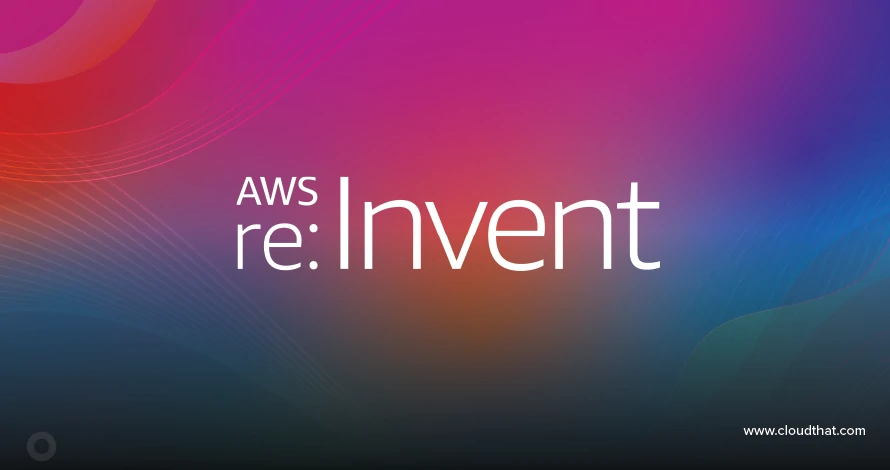|
Voiced by Amazon Polly |
Introduction
Infrastructure as code (IaC) is the process of managing IT infrastructure using configuring infrastructure through code instead of manually. A manual process needs operators and system administrators to configure any changes to the infrastructure.
Using IaC, DevOps teams can ably store the infrastructure configuration code and application code in a central repository. IaC ensures consistent and secure deployment. By avoiding manual error-prone configuration and deployment, security standards and policies are easy to maintain. And, now DevOps engineers can improve scalability and productivity through faster deployments using IaC.
Freedom Month Sale — Upgrade Your Skills, Save Big!
- Up to 80% OFF AWS Courses
- Up to 30% OFF Microsoft Certs
- Ends August 31
Top IaC Tools by AWS, Azure & HashiCorp
Well, DevOps engineers can choose from various tools when implementing IaC. Three of the most popular tools for Amazon AWS – CloudFormation, Microsoft Azure – Azure Resource Manager (ARM) templates, and HashiCorp Terraform. Proprietary offerings like ARM templates and AWS CloudFormation allows infrastructure configuration exclusively on their respective cloud providers. Furthermore, HashiCorp’s Terraform supports multiple cloud providers.
If you want to know more about CloudFormation here.
Configuration Language
Azure ARM templates can only be written in JSON while AWS CloudFormation supports both JSON and YAML. On the other hand, HashiCorp Terraform configuration files use either of two formats: Terraform domain-specific language (HashiCorp Configuration Language format [HCL]), which is the recommended approach, or JSON format if the files need to be machine-readable.
Terraform configuration files are convenient to document and maintain, so tracking down errors or security bugs is less difficult.
Modularity
Modules allow us to reuse configuration files in other deployment environments. Modules are components that can be reused across multiple CloudFormation templates and are used just like a native CloudFormation resource. CloudFormation does not have native support for modules. It allows you to use something called nested stacks as modules. Given an example, you can have a standard configuration of how you wish to provision an S3 bucket in your organization. So, you create a standard CloudFormation template that creates S3 buckets. When an end-user wants to create the S3 bucket they can use this CloudFormation template as a nested stack and create a standard S3 bucket.
There is also an unknown service of AWS, the AWS Service Catalog that can help you with the modularity of your AWS CloudFormation. Service Catalog is an AWS service that is designed specifically for organizations that want to limit the scope of AWS Services to meet compliance, security, cost, or performance requirements. And estimate what? AWS Service Catalog uses CloudFormation templates in the backends.
Modularize the configuration code for ARM templates by nesting templates by breaking your template into multiple template files. You can modularize ARM templates using “nested ARM templates” which are (relatively) flexible also — you can bring in nested templates from files, URLs, etc. — but the file needs to be accessible by Azure Resource Manager during deployment (which means you cannot have the nested template just locally — it has to be stored somewhere ARM can fetch it, e.g. in the Storage account).
A Terraform module allows you to create logical theorization on top of some resource set. By way of explanation, a module allows you to group resources and reuse this group later, possibly many times. A Terraform module is a set of Terraform configuration files(.tf files) in a single directory. Even a simple configuration consisting of a single directory with one or more .tf files is a module. So in this sense, every Terraform configuration is a bit of a module.
Root module:
When you run Terraform commands directly from a directory, it is considered the root module.
Child module:
A module that is called by another configuration is mentioned as a child module.

Planning
With the usage of terraform plan command, you can perform dry runs of your code, letting you know what the deployment changes. It’s kind of like a preview before making the actual changes.
ARM provides similar functionality using the what-if operation. This operation highlights the changes that will occur to the existing resource if you deploy the template.
Cleaning up
Usage of running the terraform destroy command to destroy resources in Terraform. This command is helpful for terminated resources.
An Azure ARM template doesn’t have an explicit destroy command. You need to use the Azure CLI or the Azure console to manually remove the resources. Removing these unwanted resources helps keep your infrastructure secure by shrinking your attack surface.
In AWS CloudFormation, you can delete the CloudFormation stack (and therefore all resources contained within it) through either CLI or console.
Advantages and Disadvantages
- AWS CloudFormation

- Azure ARM Template

- Terraform

Feature Comparison


Conclusion
On the subject of IaC tools, the option depends on the needs of an application. If an application’s infrastructure must reach multiple cloud providers, the best option is in all probability Terraform. AWS CloudFormation, Azure ARM, and Terraform are powerful and fully developed tools. The differences above will help you make an informed decision to choose the tool on behalf of your requirements. As an individual suggestion, if you plan on using multiple cloud platforms in the future or are currently using multiple clouds you should use Terraform as a one-stop-shop for all your needs.
Freedom Month Sale — Discounts That Set You Free!
- Up to 80% OFF AWS Courses
- Up to 30% OFF Microsoft Certs
- Ends August 31
About CloudThat
CloudThat is an award-winning company and the first in India to offer cloud training and consulting services worldwide. As a Microsoft Solutions Partner, AWS Advanced Tier Training Partner, and Google Cloud Platform Partner, CloudThat has empowered over 850,000 professionals through 600+ cloud certifications winning global recognition for its training excellence including 20 MCT Trainers in Microsoft’s Global Top 100 and an impressive 12 awards in the last 8 years. CloudThat specializes in Cloud Migration, Data Platforms, DevOps, IoT, and cutting-edge technologies like Gen AI & AI/ML. It has delivered over 500 consulting projects for 250+ organizations in 30+ countries as it continues to empower professionals and enterprises to thrive in the digital-first world.
FAQs
1. What is IAC used for?
ANS: – Infrastructure as code (IaC) is the process of managing IT infrastructure using configuring infrastructure through code instead of manually. A manual process needs operators and system administrators to configure any changes to the infrastructure.
2. Why should we use CloudFormation?
ANS: – CloudFormation supports almost all the services on AWS. It also integrates well with serverless and all the services offered by AWS, e.g., AWS Lambda, etc.
3. Why should I use Terraform?
ANS: – It is free, Open source, and easy to use. Terraform is written in HCL language which is easy to understand. And also Terraform supports multiple cloud providers. Apart from this, Terraform has many in-built modules, which makes its code reusable and flexible.
4. Why should we use the ARM Template?
ANS: – ARM supports almost all the services on Azure. It also integrates well with serverless and all the services offered by Azure.
5. Can Terraform be used in AWS and Azure?
ANS: – Yes, Terraform can be used in AWS and Azure with the help of access(Credentials) and secret keys.
6. Is AWS CloudFormation free?
ANS: – Yes, it is. CloudFormation is free. AWS only charges for those services which you provision using CloudFormation.
7. Is Terraform free?
ANS: – Yes, Terraform is also free. The resources you create using Terraform on the cloud are not free. You will have to pay the fee to the cloud service provider for the resources you provision using Terraform. However, Terraform has an Enterprise edition, which comes with a price. It offers better collaboration and governance features.

WRITTEN BY Minhaj Kadri
Minhaj is a Research Associate-DevOps in CloudThat and a certified professional on AWS. She has demonstrated a history of architecting highly secure, scalable, fault-tolerant, cost-effective infrastructure on multi-cloud platforms AWS, Azure, and GCP.


 Login
Login


 September 30, 2022
September 30, 2022 PREV
PREV










Comments